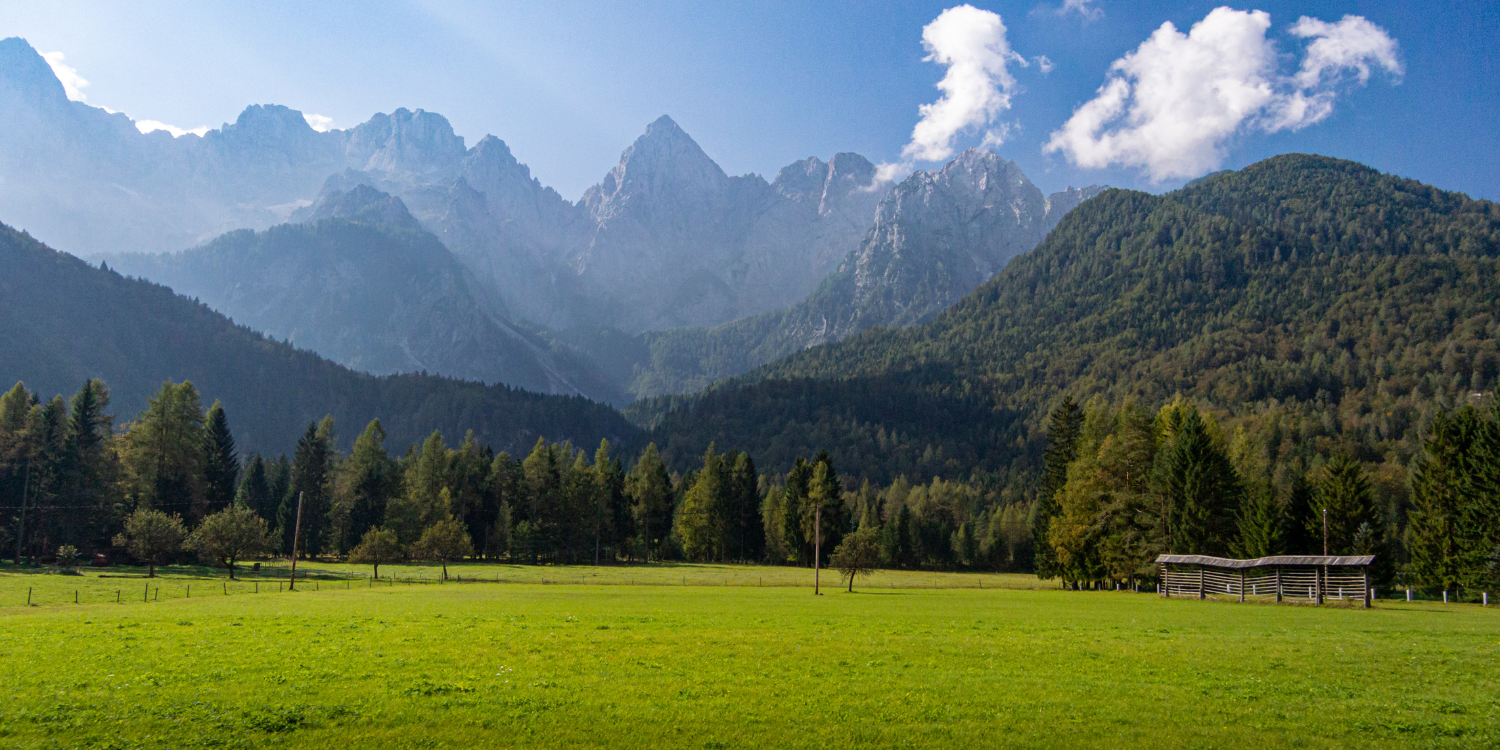
15 Feb How the Alps Shaped the Soča Valley, part 1
Soča valley lies in the lap of the Julian Alps. Breathtaking landscape of green meadows and forests, white mountain peaks and emerald waters, draws our life as idyllic as to some sweet advertisement for Milka chocolate.
Yet the Alps are one of the most dynamic and the most dangerous mountain ranges in the world. Home to some of Europe’s highest mountains, longest glaciers and the most steep slopes. World, where mountains literally collapse into themselves.
Yes, if Alps were some rock band all their concerts would be sold out at least until the end of this geological period.
SUPERCONTINENT PANGEA
Their remarkable rock career began in the distant times of the late Paleozoic. 300 million years ago our Earth was a peaceful place. All the continents lived together under the same roof in unity and harmony. Every evening they drank beer and played poker patting each other’s shoulder and were generally satisfied with their fate.
It was a time of superlatives when the mainland was called supercontinent and the sea superocean. Supercontinent was named Pangea, which in ancient Greek apparently means all lands.
The only thing messing with their days of joy, was the weather. Of course, what else. Since time immemorial the most popular conversation starter: “Hey, what a terrible weather we have this week.” – “Oh yeah, really. It sucks. ”
The weather was quite extreme in those ancient times. Winters were cold and dry, summers were hot and humid with occasional mega monsoons. But life still developed smoothly. And, if 300 million years ago you saw the light of day as a frog or a lizard, you won.
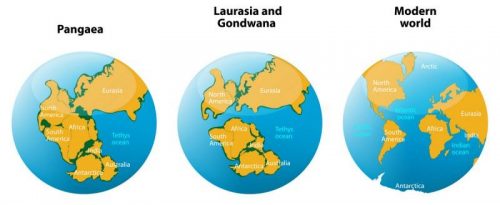
TETHYS OCEAN
In this peaceful period of progress and prosperity 100 million years have passed. Geologists have turned another page in their thick book, and named a new section the Mesozoic. Dinosaurs were already rumbling around the world and T-Rex was crowned as the main boss of the village.
It was then when first disagreements cracked that great happy continental squad of ours. Every medium talented shrink is able to explain to you that in such cases two groups usually form within one party. In accordance with the normal behavior Pangea split into two sub-continents called Gondwana and Leurasia. The space between them was filled with the Tethys Ocean, which was a tropical paradise with picturesque flora and fauna.
Tethys Ocean, which is very important for of our story, was named after the Greek sea goddess Tethys. Tethys was the grandmother of the sea nymph Tethis (Greek mythology likes to complicate stuff) who, was the mother of a very epic Greek hero Achilles. Yes, this is the mom who gave her baby son a shower in the river Styx in order to make them immortal.
Achilles had this misfortune that his dad was human. Therefore, the immortal visa was not pasted in his passport at birth. Then, his mother too got a little sloppy and forgot to flush kids heel.
However, Achilles later entertained himself by releasing his heroic testosterone in Troy until one day he met Paris’s arrow. This very rude piece of wood and metal struck him directly to the sensitive heel. Paris too was not exactly some clown, even though he was just a man. After all, he did manage to successfully seduce the official Miss of the World Helen and trigger the 10-year war.
At the end Achilles went to the stars to meet his divine family. Years latter the beautiful and muscular Brad Pitt acted him in a movie. But that’s another story, which belongs to a completely different geological period.
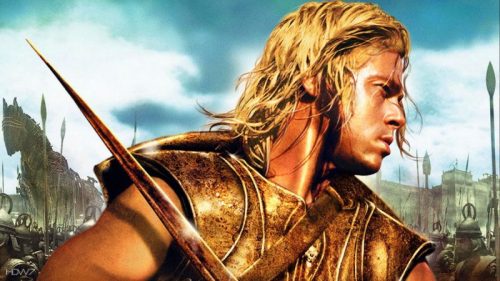
ALPS ARE BORN
Meanwhile, back in the Mesozoic the continents were still arguing. In fact, they have now permanently decided to break up for good. The strategic plan was to take as much space as possible and so Europe and Africa badly clashed against each other. Rock’n’roll of global dimensions began.
First, they flocked around for a while leaving less and less space between them. Then, it cracked. European tectonic plate began to slide under the African somewhere in the depth of the earth’s core, where magma is at home and living conditions are not exactly outstanding.
On the other hand, the African tectonic plate began to rise above the European somewhere towards the sky. Pushing the bottom of the Tethys Sea and lifting it. Water has drained and the Alps were born – made up of different layers like a cake with the European cake base, Tethys marine filling and African creme on top.
To make it short, the peaks that today grace our brochures and other promotional material, were once at the bottom of the sea. In fact, they were the bottom of the sea.
We already said that the warm tropical ocean was perfect home to all kinds of algae and sea grass, coral, sea urchins, sea stars, jellyfish, fish, shellfish and snails. They cheerfully swam, ate fine, made babies and did whatever sea urchins, corals, algae and sea stars do. At some point, of course, they also died and sank to the ground.
Their skeletons got mixed with mud and on that fell the next generation of marine inhabitants and so on, until the heap slumped under its own weight and petrified. On it, then next layer of small skeletons and shells formed, and so on until the African tectonic plate rose these sedimentary layers magnificently in heights.
Our impressive Alps are thus made almost exclusively from the bodies of exotic tropical sea creatures. To avoid morbid funeral jargon scientists have professionally named this material limestone (sounds familiar, right?).
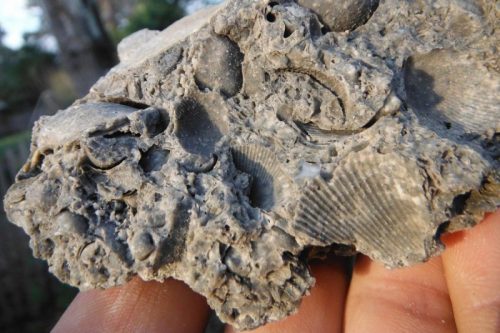
KANIN MOUNTAIN CHAIN
These sedimentary layers ala Frutti del mare can be seen everywhere in Bovec. A good example is Kanin mountain range, where they are deposited in a nice horizontal formation, which from a distance looks like a pyramid.
Elsewhere, you can see them stacked asymmetrically in different directions, and sometimes even broken or wrapped. That proves that the event of Alps rising from the sea must have been quite wild. No, it was not a pleasant afternoon walk along the Riviera. More a navigation on the open ocean in the worst stormy night with enormous waves in a boat, close relative to bath.
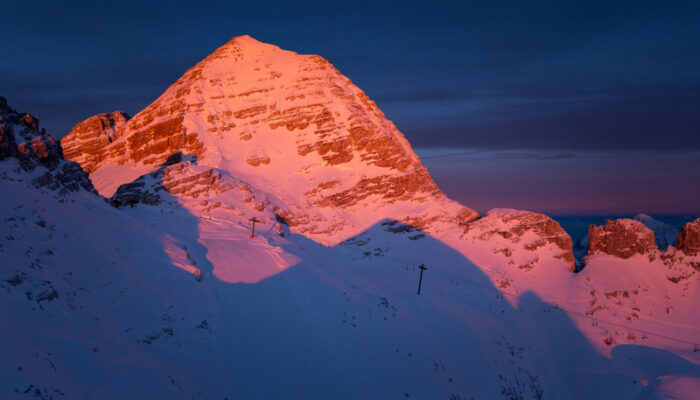
SRNICA CAVE
By far the most beautiful souvenir we got from the Tethys Ocean are heart shaped sea shell fossils in Srnica cave above the village Plužna.
The fossils look like hearts, that’s how they got their name. Some hearts are as small as an egg, but you can find some as big as two hands. Gallery walls are decorated with really beautiful fossils and cave is definitely worth a visit, if only you don’t suffer from claustrophobia or a fear of heights.
For caving adventure you need to be properly equipped with good hiking boots, helmet, headlamp, ropes, climbing harnesses and carabiners. We recommend that you leave us with all this organization and let us take you into the cave with a guide.
If you have medium to strong hiking ambitions and plan to visit us for some serious hiking, you can meet fossils at any of the hiking trails. Imprinted in the rocks are lying everywhere in the mountains. You only need a little bit of luck. And, a sharp eye.
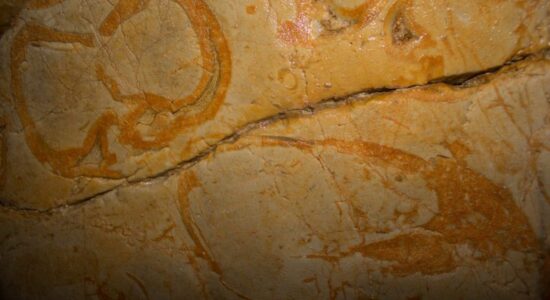
O.K. let’s go back to the Mesozoic era. Africa has just lifted Alps somewhere up to 6,000 meters. And spoiled our tropical weather in Europe by doing that. The fate of future generations of fishermen was sealed. They will someday in the future, therefore, become farmers and foresters. All future surfers will begin practicing alpine skiing and collect medals at the World Alpine Ski Championships.
One day the inhabitants of eight European countries, which include the Alps – Slovenia, Italy, Austria, Germany, France, Switzerland, Liechtenstein and Monaco – will find out that the Alps are also interesting for tourists and make this a good business. So no one will be nervous because of the tropical climate any more.
But in this moment Alps are still a young mountain range, which has just stopped rising. For our present perceptions they are huge. 6.000 meters high peaks reign over the wild landscape. So what happened that the entire mountain range then lost almost half of its height? Is this possible? And where the hell has all this material disappeared?